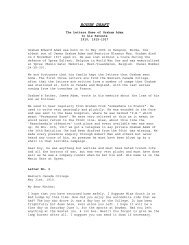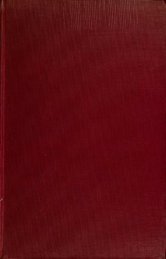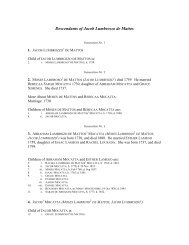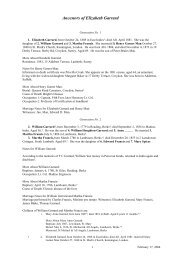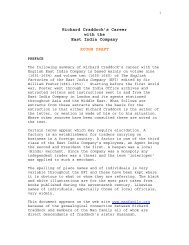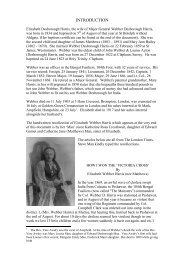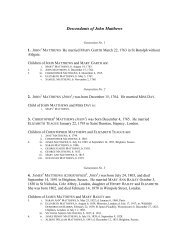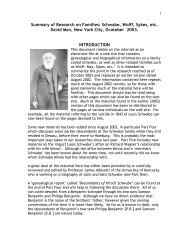Norman Leslie Falcon. 29 May 1904-31 May 1996 A. J. Martin; P. B. ...
Norman Leslie Falcon. 29 May 1904-31 May 1996 A. J. Martin; P. B. ...
Norman Leslie Falcon. 29 May 1904-31 May 1996 A. J. Martin; P. B. ...
- No tags were found...
You also want an ePaper? Increase the reach of your titles
YUMPU automatically turns print PDFs into web optimized ePapers that Google loves.
<strong>Norman</strong> <strong>Leslie</strong> <strong>Falcon</strong>169southern basins of the Gulf of Alaska and the Cook Inlet as places to explore, although smallcommercial fields had already been found in the Cook Inlet. The large Mesozoic basincovering the whole of Arctic Alaska was considered more attractive. Furthermore, relativelyfew companies at the time were active in the area. The same pattern of work was adopted andalthough initial drilling resulted in no commercial success, interest gradually moved, with thegrowth of understanding, towards the coastal Prudhoe Bay area.Although the discovery well was drilled after <strong>Norman</strong> had retired, it was during his last twoyears of office that all the licences were obtained in which BP's share of the field and satellitefields lie. Thus the company holds the largest share of the oil of Prudhoe Bay, the largestoilfield in North America (14000000000 barrels) and a significant share of the Kuparuk Riverfield (4 500000000 barrels) as well as in some of the nearby smaller satellite fields.Experience in the North Sea was different. The huge Groningen gasfield in northernHolland had been discovered and the geology onshore the UK was well known. The potentialwas recognized but rather than bid on the large, obvious structures off the Norfolk coast,<strong>Norman</strong> decided to restrict bids to the northern flank of the basin where it was believed thePermian Rotliegendes sandstone reservoirs would be best developed. Early drillingdiscovered the West Sole gasfield, but the giant fields, in which BP had no share, lay to thesouth.Later the position in the northern North Sea showed a return to successful primaryexploration in that the acreage was obtained on which the giant Forties oilfield lies, but as inAlaska, the discovery well was not drilled until after <strong>Norman</strong>'s retirement.In addition to these reserves of world significance, a steady background of exploration wascarried out that gave rise to contemporary or later commercial discoveries, such as those inColombia, Canada, Papua New Guinea, New Zealand and offshore north-west Australia.Other areas were explored and discarded, such as East Africa, Sicily and Greece. As areflection on the embarassment of riches that the company enjoyed at this time the boarddecided to withdraw from Oman after the first well was dry-a decision later to be regretted.These successes were achieved against a changing background. The end of <strong>Norman</strong>'scareer coincided with a period that saw the beginning of the move from dominantly onshoreto offshore exploration and, shortly before he retired, the company made its first tentative useof digital computers in the acquisition and processing of seismic data. The world of oilexploration in which he had been trained and worked all his professional life, at a time whenthe exploration geologist's role was supreme within the oil industry, was about to change inways that at the time could be barely perceived. Thus the exploration world with which he wastotally familiar and in which he played a notable role, stood at the threshold of great changes.It peaked with success at the time of his retirement-a fitting close to his company career.As Chief Geologist <strong>Norman</strong> read all reports, long or short, that were sent to Head Office.Sometimes they would provoke a written reply and others a passing comment when he andthe author met. Whatever the reaction to a report, he kept an eye on what his staff were doing.Much of his comment related to where any particular piece of work was leading. Practicalvalue was always important and to end a project was as necessary as pursuing it if nousefulness could be shown. Poor work got short shrift. A colleague, J.F. Watson wrote that<strong>Norman</strong> was one '. .. who could spot a humbug a mile away, and who did not suffer foolsgladly'.Not only was work itself important but also its presentation. Periodically he issuedinstructions to all geologists on how work was to be presented. In days when all colouring of



